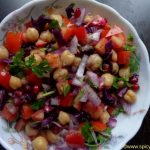In a world where the quest for boundless energy often leads us down winding paths of caffeine-laden shortcuts and sugar-fueled sprints, the age-old question of diet and vitality remains ever pertinent. Among the myriad dietary choices that promise a surge in stamina, the idea of cutting out meat has garnered both fervent advocates and skeptical critics. Does a plant-based plate truly hold the secret to revitalized energy levels, or is it merely another nutritional mirage? As we embark on this culinary exploration, we delve into the heart of this dietary debate, examining the science, the stories, and the subtle shifts in vitality that accompany a meat-free lifestyle. Join us as we uncover whether the journey to sustained energy might just begin with a single, mindful bite.
Exploring Nutritional Benefits of a Meat-Free Diet
- Enhanced Digestive Health: A plant-based diet is rich in fiber, which can lead to improved digestion and a healthier gut. This can help in more efficient nutrient absorption, potentially translating to increased energy levels.
- Reduced Inflammation: Meat-free diets often include a variety of anti-inflammatory foods, such as fruits, vegetables, nuts, and seeds. Lower inflammation can contribute to a feeling of vitality and alertness.
- Balanced Blood Sugar: Many plant-based foods have a low glycemic index, helping to maintain steady blood sugar levels. This stability can prevent energy crashes, keeping you feeling more energetic throughout the day.
- Rich in Antioxidants: Vegetables, fruits, and legumes are packed with antioxidants, which combat oxidative stress and might lead to improved stamina and energy.
- Heart Health: A diet free of meat often leads to better cardiovascular health, which can improve overall endurance and energy levels by enhancing blood flow and oxygen delivery to cells.
Understanding the Role of Plant-Based Proteins in Energy Production
Many individuals exploring a plant-based diet often wonder how these proteins contribute to their energy levels. While meat has traditionally been a primary source of protein, plant-based alternatives like lentils, chickpeas, and quinoa offer unique advantages. These proteins are not only rich in essential amino acids but are also accompanied by fiber, vitamins, and minerals that play a crucial role in maintaining energy levels. Unlike meat, plant proteins are less taxing on the digestive system, allowing the body to allocate more energy towards daily activities rather than processing heavy meals.
Furthermore, plant-based proteins often come with an array of phytochemicals and antioxidants that can enhance energy production by reducing oxidative stress in the body. This stress reduction can lead to improved cellular function and overall vitality. The inclusion of diverse plant proteins ensures a balanced intake of nutrients, supporting sustained energy without the post-meal sluggishness that sometimes accompanies meat-heavy diets. Embracing plant-based proteins may not just boost energy levels but also contribute to an overall sense of well-being, making it a compelling option for those seeking a more vibrant lifestyle.

Balancing Nutrients for Optimal Vitality Without Meat
Transitioning to a plant-based diet doesn’t mean compromising on essential nutrients necessary for maintaining energy and vitality. It’s crucial to incorporate a variety of foods that provide a comprehensive range of nutrients. Protein, for instance, can be sourced from beans, lentils, and quinoa. These plant-based proteins not only support muscle health but also provide lasting energy throughout the day. Additionally, iron, often associated with red meat, can be obtained from spinach, chickpeas, and fortified cereals, ensuring your body gets the oxygen it needs to function optimally.
To further enhance energy levels, focus on incorporating foods rich in vitamin B12 and omega-3 fatty acids. While B12 is primarily found in animal products, fortified plant-based milks and nutritional yeast can be excellent alternatives. For omega-3s, consider flaxseeds, chia seeds, and walnuts. A balanced diet that includes a variety of colorful fruits and vegetables will not only provide necessary antioxidants but also boost overall vitality. By carefully selecting nutrient-dense foods, it’s entirely possible to sustain high energy levels without relying on meat.
- Protein Sources: Beans, Lentils, Quinoa
- Iron Sources: Spinach, Chickpeas, Fortified Cereals
- Vitamin B12 Sources: Fortified Plant-Based Milks, Nutritional Yeast
- Omega-3 Sources: Flaxseeds, Chia Seeds, Walnuts

Practical Tips for Transitioning to a Meatless Lifestyle
Embarking on a meatless journey can be a fulfilling endeavor, yet it’s essential to navigate this transition with mindfulness. Begin by gradually incorporating plant-based proteins such as beans, lentils, and tofu into your meals. These options not only provide essential nutrients but also help you maintain a balanced diet. Experiment with new recipes and discover flavors you might not have considered before. This approach allows your palate to adjust and helps prevent any sense of deprivation.
Another effective strategy is to plan your meals ahead. Having a variety of delicious and nutritious options at your fingertips makes it easier to stay on track. Consider these tips:
- Stock up on essentials: Keep your pantry filled with whole grains, nuts, seeds, and a range of fresh vegetables.
- Meal prep: Dedicate time each week to prepare ingredients or entire meals, ensuring quick and healthy options are always available.
- Explore new cuisines: Dishes from cultures with a history of vegetarianism, such as Indian or Mediterranean, can offer endless inspiration.
By taking these steps, you can smoothly transition to a meatless lifestyle while exploring a world of vibrant, energy-boosting foods.
In Summary
In the quest for boundless energy, the debate over dietary choices remains as dynamic as ever. Cutting out meat, for some, unveils a newfound vitality, a spring in their step that propels them through the day. For others, the journey might not be as straightforward, as individual bodies respond uniquely to dietary shifts. Whether you find your energy in a plant-based diet or through a balanced omnivorous approach, the key lies in listening to your body’s whispers and crafting a nutritional path that fuels your life’s adventures. As we continue to explore the intricate tapestry of nutrition and energy, one truth remains clear: the power to energize your life is, quite literally, on your plate.




